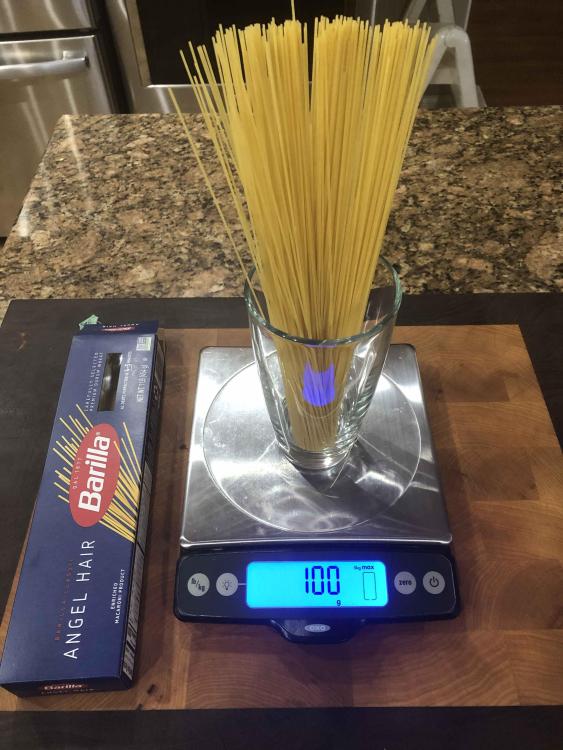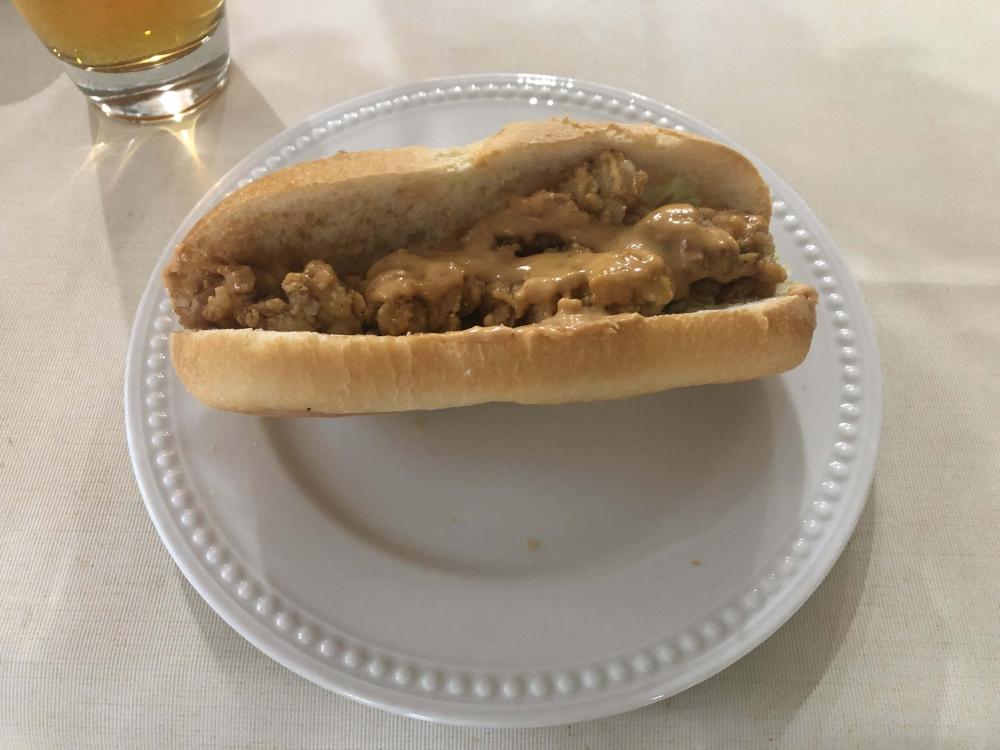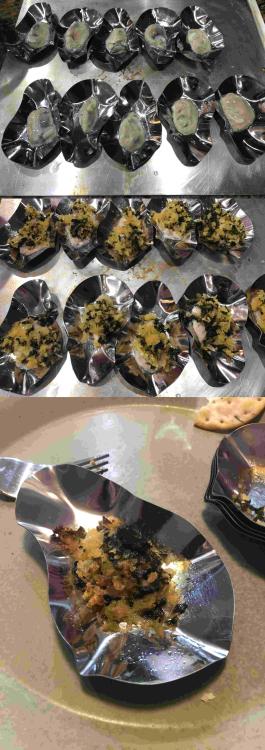-
Posts
1,608 -
Joined
-
Last visited
Content Type
Profiles
Forums
Store
Help Articles
Everything posted by AlaMoi
-
there is a long established/existing 'theory' - the 'triangle' of sink / cooktop / refrigerator. many variations / placements of 'the triangle' - but the basics remain steadfast. going outside the 'proven' utility could result in less than happy long term results. higher/lower countertops - splendid idea - but only if one does the "do" of the aforementioned cooking tasks. if one hand kneads some-to-many-to-dozens of bread loaves/products per week, well worth it. depending on how tall you are . . . we have done 'house hunting' quite a few times - and we've seen a whole lotta' "whot? can you believe this?" situations. which, btw, and OMG!, applies to many aspects outside 'the kitchen' - but that's another rant . . . I've lived with a number of kitchen "islands" - I have real serious issues about an island that skids/moves/slips around under my usage. the idea of "flexibility" sounds great - but if the d*ng thing does not stay still while you are carving up the turkey,,,, that's a problem.
-
ooops. sorry - it was a thing that came to me for 'long pasta'
-
-
heehee. +/- twice a year I do the board and some-or-all the treenware with mineral oil&beeswax. the oldest of those date to the mid-1980's - made from black cherry - very durable.
-
-
the biggest issue in home deep frying is the 'batch size' that can be done without chill shocking the oil to a low temperature. the big commercial stuff has oil capacities of 10 gals and up. they can fry a big basket of stuff and not lose the fry temp. I use a one qt copper pot for stuff like shrimp, a 3 qt copper pot for bigger stuff like chunks of chicken. a thermometer, and I'm good to go. takes a little practice on (gas) burner control to maintain temp.... even so - it's 4-5 shrimp / 2-3 chicken chunks at a time. not conducive to feeding a large crowd.... spatter - screen type spatter shield. drip rack - cookie sheet covered with paper towels. for doing a crowd I'd look into a rental fryer / propane fired - as a 'one-off' solution.
-
yesterday was waffle morning . . . don't know exactly how I messed up, but seems the batter may have been a bit on the thin side and perhaps a bit too much baking powder...? used the measuring cup provided . . . as soon as I closed the lid I had waffle juice running out aplenty! flipped and that side was even worser!! now... the waffles turned out fine - but the mess was a mess. I left the waffle maker plugged in for about 20 minutes - that "baked" the overflow onto the surfaces and after it cooled down I could easily 'pick it off' so there's a trick to remember. there are many yeasted recipes - I'm going on a tear to try them all! Liege style uses "pearl sugar" - anyone used it? does it make a difference?
-
side note of little linguistic importance: shrimp and prawns are scientifically not the same item. "Shrimp belong to the pleocyemata suborder, which also includes crayfish, lobsters and crabs. On the other hand, prawns belong to the dendrobranchiata suborder." "shrimp scampi" is a pet peeve - I must say I've never encountered "prawn scampi" in the Mediterranean, langosta are aka lobster - but don't go looking for them big claws . . . this side of the pond, the distinction between 'warm water' lobster and 'cold water' lobster exists....
-
did you account for the avian flu issue? in the USA, 5-10 million chickens / poultry that lay eggs have died, or been killed, to prevent further spread of the disease(s).
-
in prior life business travels . . . spent time in Luton and also "greater London" (it's not a small village . . .) enjoyed many many "English Breakfasts" - the sausages - which I only later learned to name "bangers" were different, in a good way, from USA or German breakfast fare. in Germany high(er) end hotel breakfast had soft/hard cooked eggs, bread rolls, cheese, cold cuts, and schmier cheese + schmier 'wurst' - but seldom 'free standing' sausage links. a puzzlement because most cities every street corner has a butcher with their own version of 'hung & dried' link 'sausage . . . apparently too expensive for hotels vs potted Leberwurst schufft . . . in USA I prefer sausage patty to "links" - but quite frankly it's quite next to impossible to encounter a breakfast offering of anything that resembles a UK "banger"
-
we have several local 'farm stores' i.e. the winter version of a 'farm stand' - that sell their own eggs. they do not sort/grade/inspect - these are eggs laid yesterday . . . leaving the issue that in a dozen one gets a mix of small to jumbo. realistically this is not a problem for the well rounded cook . . . breakfast eggs - over easy to scrambled to pan omelet . . . the size is not much of an issue. for small qty batches of baked stuff, the well rounded cook needs to be a bit more careful in selecting something close to 'large' - which is what most recipes are based on. for the most part their prices have been stable - their most sensitive cost is the feed. since they typically buy large quantities of feed, the doubled cost of feed does not factor into their selling price until they have to by more . . .
-
try an aluminum plate. aluminum specific heat is 2x steel and heat transfer is 4x/6x better than carbon steel / stainless steel. now.... the specific heat is a normalized value based on mass, so you'll need a aluminum plate about 2x as thick as a steel one.
-
ooooooh, tempura vs flour&cornmeal breading sounds wonderful! especially a po-boy. I have a great tempura batter I use for shrimp - might need to thicken it a bit but ... I dug out my grandfather's oyster knife - time to learn the art of the shuck. our fish monger has ice beds of live oysters - so perfecting the DIY routine will allow me to buy the quantity I need for the current cravings without having to fit in 'use them up' dishes. plus, sometimes the shucked pints are "short dated" - i.e. not a lot of time to use them . . . can't rely on having a week +/- to eat them up. the last pint I bought were fairly small ones - 28 in the pint.
-
actually, , , eye round works fairly well for minute-steak style sandwiches - wet cook method, and sliced very thin, au jus. mechanical slicer recommended, hand slicing that requires (a) really sharp long knife and (b) some practice....
-
given a pint of oysters , , , we did another ham&oyster dinner. then finished them off with a lunch po-boy. (there's shredded lettuce hiding underneath . . )
-
it's powerful stuff - perusing some cracker recipes, it appears 2t for 600g is double the usual....
-
use a stone - and preheat the oven to 500'F at least one hour to ensure the stone is hot. my (new~) oven goes to 550'F - and I have to turn it down after the pizza goes in or things get too browned. fwiw, I do not subscribe to the theory that a pizza must be baked to done in under 3 minutes... mine go 11-13 mins. I preheat the tomato sauce - which helps the crust crisp 'all the way thru' I also use round parchment paper - same diameter as stone - helps when rolling out the dough - and a cookie sheet to move it on/off the stone. let it cool on a rack ~5 mins so everything 'sets up'
-
one's needs play a huge role in this waffle making business. for two - empty nesters - a high wattage double flipper style seems perfect. my 'one egg' recipe quantity makes 3.5 round waffles - so we both can eat at the same time + my 'second' is ready right quick, and the .5 left over batter is seriously appreciated by my sous chef aka "kitchen dog" . . . for one - a single serve style works great - fast or slow. it's cooked, one eats, that's it . . . the speed / wattage only becomes when one is trying to feed more mouths than the per batch wattage can produce. our old Hamilton Beach single flipper took seven minutes for the first (preheated) waffle, but eight minutes for the second. by the time "my waffle" was ready to eat, DW was done and moving on . . . a big four square plate style should work well for 'a family' - had one of those old style round cast iron, long pre-heat types - produced four quarters at a clip - great for four people - no one was finished with their first morsel before the next batch was 'done' . . . dumped it when the antique style fabric shield cord was getting waaaay-toooo-hot for "safety" - probably should have replaced the cord&plug in. old stuff always worked great. anyone gone down the 'ye olde cast iron gas burner waffle iron' route? seems like 'some practice required' but in terms of 'make 'em quick' could be veddy attractive.....
-
that kind of collapse I have "experienced" when the center was under-baked (likely temp too high, outside done, inside,,, not so much) all the 'included' items may have contributed to the issue (i.e. the too heavy for gluten support theory,) a bit of over-proofing could contribute . . the crumb shot sorta' indicates the middle is still wet - perhaps a lower temp longer bake?
-
Oysters Rockefeller, Round 1 so I went withthe Antoine’s "original" recipe - exceptions.... deleted parsley, DW has a thing . . . , used Sambuca vs. Pernod. DW scarfed down 5 and pronounced: "I enjoyed that." that's pretty high on the praise list,,, iffin' one didn't know . . . soaked raw oysters overnight in butter milk - a 'trick' learned from a Baltimore most excellent chef - the acidity firms up the oysters.... me: not a fan of 'burn off yo' lips' stuff - the Tabasco was a bit strong - DW loved it, I will use it again and remain silent . . . used panko for the bread crumbs - may think to pan toast them next try - altho they did brown nicely in the oven.... looks like:
-
"as much difference as once was . . ." quite normal. big chains have a buffer of 'contract' prices/discounts, smaller chains have less power . . . we have a local Lidl - like 40 minutes away, not expecially anyplace we go to or pass big sign on very local street with empty acreage , , , Welcome Lidl to . . . " given that all these kinds of 'organizations' lie to the sky . . . waiting to see what actually comes true. especially as DW/Kinder have 'attachment' to Edeka and Lidl. . .
-
an earlier model (with knob vs. slider for 'doneness') of this one Cuisinart WAF-F40 Double Flip Belgian Waffle Maker Black/Stainless Bundle with 1 YR CPS Enhanced Protection Pack (eG-friendly Amazon.com link)
-
wattage - get the biggest wattage model in the configuration you want.... we had a low wattage deep waffle aka Belgian maker - it would take 8 minutes to produce a waffle - totally unworkable for more than one person... replaced it with a 1400 watt model - flip style - two waffles at same time - that does the job in about three minutes.
-
so appears also Kerry Gold butter . . .
-
if it is sold in USA, the FDA will have use. nothing I can find in the poster's profile indicates 'outside' - so we're just bumbling around in the dark.










